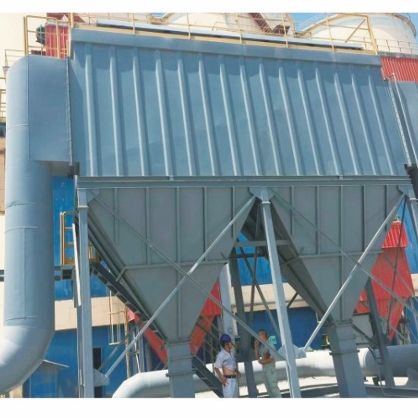- English
- Español
- Português
- русский
- Français
- 日本語
- Deutsch
- tiếng Việt
- Italiano
- Nederlands
- ภาษาไทย
- Polski
- 한국어
- Svenska
- magyar
- Malay
- বাংলা ভাষার
- Dansk
- Suomi
- हिन्दी
- Pilipino
- Türkçe
- Gaeilge
- العربية
- Indonesia
- Norsk
- تمل
- český
- ελληνικά
- український
- Javanese
- فارسی
- தமிழ்
- తెలుగు
- नेपाली
- Burmese
- български
- ລາວ
- Latine
- Қазақша
- Euskal
- Azərbaycan
- Slovenský jazyk
- Македонски
- Lietuvos
- Eesti Keel
- Română
- Slovenski
- मराठी
- Srpski језик
How does a cement dust collector work?
2024-05-09
A cement dust collector, also known as a baghouse, is a crucial component in cement plants and other industries where fine particles need to be captured to prevent air pollution and ensure compliance with environmental regulations.
The first step involves the collection of dust-laden air from various sources in the cement production process, such as crushers, raw mills, kilns, clinker coolers, and storage silos. This dusty air is typically drawn into the dust collector system through ductwork using fans or blowers.
Once inside the dust collector, the dusty air passes through a series of fabric filter bags or cartridges. These filter bags are made of materials such as polyester, acrylic, or polypropylene and are designed to capture the dust particles while allowing clean air to pass through.
As the dusty air flows through the filter bags, the larger and heavier particles in the air are unable to pass through the filter media and instead adhere to the outer surface of the bags. Meanwhile, the clean air exits the collector through an outlet duct.
Over time, the dust accumulates on the surface of the filter bags, reducing their efficiency. To maintain optimal performance, the dust collector employs a cleaning mechanism to periodically remove the accumulated dust. This can be done using methods such as reverse air flow, pulse jet cleaning, or mechanical shaking.

In this method, the direction of airflow through the bags is reversed, causing the dust to dislodge and fall into a hopper below.
This method involves using compressed air pulses to create a shockwave that travels down the filter bags, causing them to flex and release the accumulated dust into a collection hopper.
Some dust collectors use mechanical devices, such as vibrating arms or shaker mechanisms, to physically shake the filter bags and dislodge the dust.
The dust collected in the hopper is then discharged for disposal or recycling, depending on its composition and any applicable regulations. In some cases, the collected dust may be recycled back into the cement production process if it meets certain quality standards.
By effectively capturing and removing dust particles from the air, cement dust collectors help to maintain clean air quality in the surrounding environment and protect the health and safety of workers and nearby communities.




